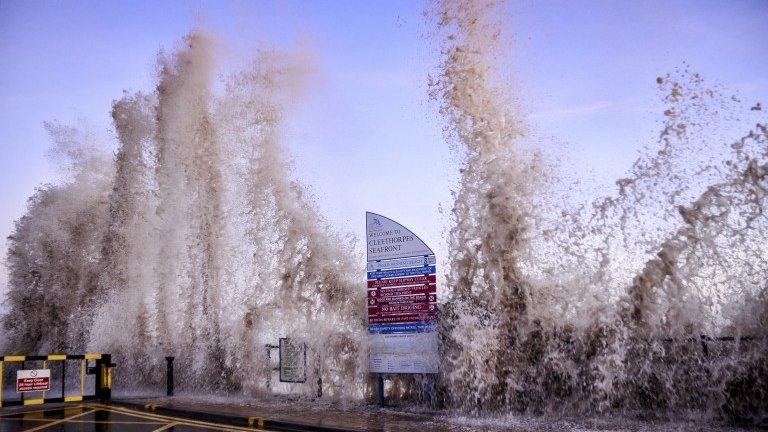Storm surge: Severe flooding avoided in Essex, Suffolk and Norfolk
- Published
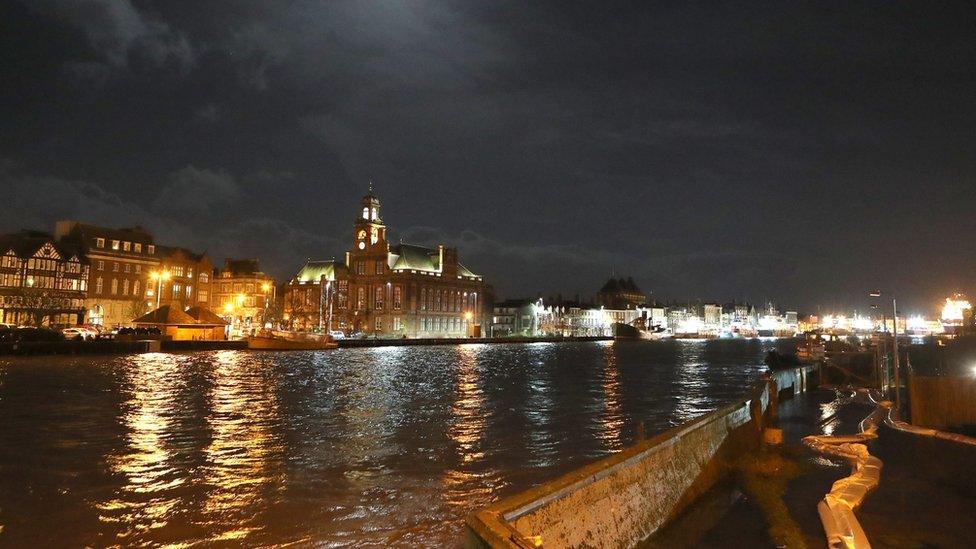
The River Yare flowed higher than it usually does at Great Yarmouth
Residents in England's east coast have escaped significant flooding after the peak surge, strongest winds and largest waves did not happen in all areas.
More than 5,000 homes were evacuated in Great Yarmouth, Norfolk, amid fears of a tidal surge, but the town was unscathed.
There are currently no severe flood warnings, external - meaning risk to life - but 148 other alerts and warnings remain.
Residents in parts of the Suffolk coast have been told it is safe to return.
Suffolk Police said people in Lowestoft could go back to their homes.
Stormy seas battered Cromer Pier
Residents were braced as gale-force winds and higher than usual tides were expected to bring waves crashing over coastal defences along the east coast.
The Environment Agency said things were not as bad as predicted because the "combination of the peak surge, strongest winds and largest waves didn't coincide in all areas, and did not reach the most dangerous levels that were possible all along the east coast".
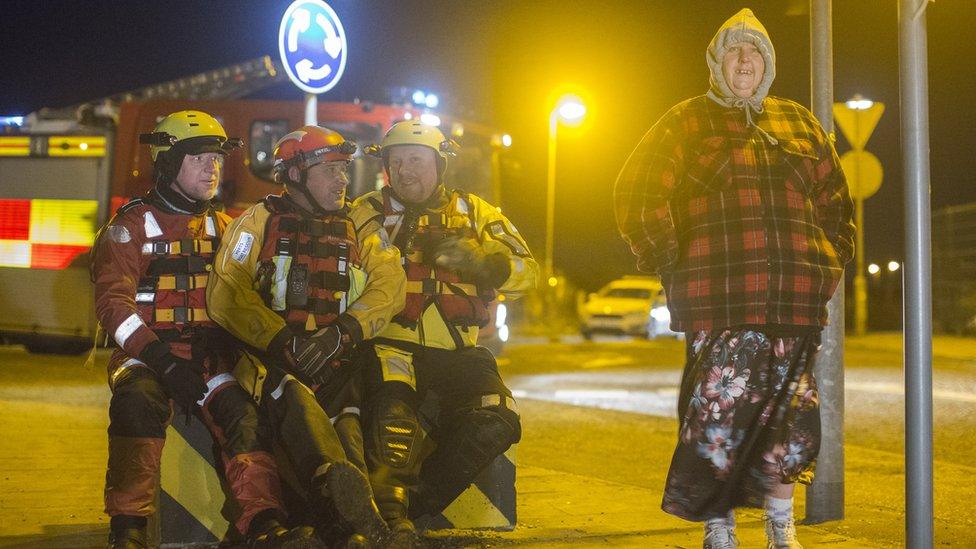
Spirits in Jaywick were high as the evacuation plan got under way
In east Suffolk, 1,800 residents were told to leave their homes. Meanwhile, about 140 residents in Jaywick, Mistley and West Mersea in Essex evacuated ahead of high tide at about 00:15 GMT on Saturday.
More than 200 people took shelter at a rest centre in Jaywick.
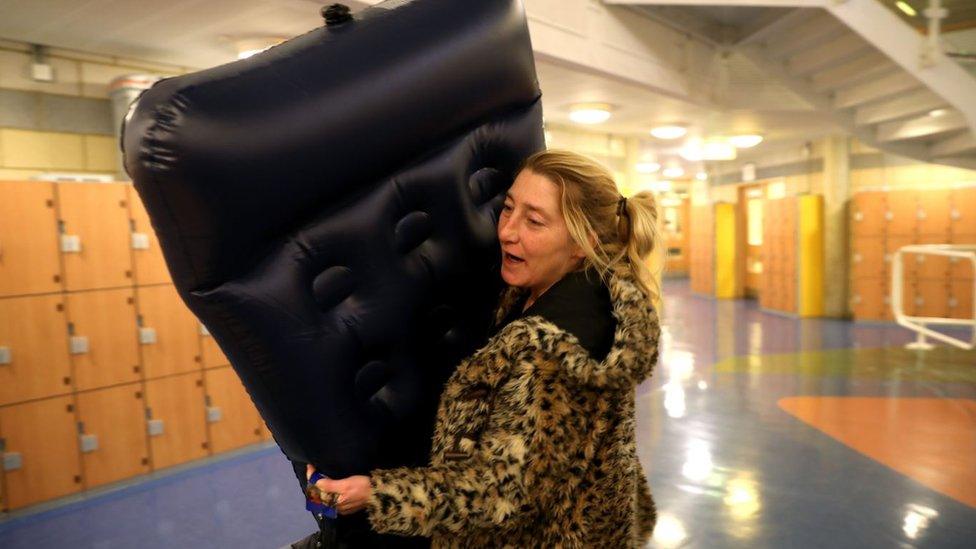
Residents slept on air beds at the rest centres...

...and one young man embraced the situation by getting comfortable
Further along the Norfolk coast, 80 homes were evacuated in Walcott, south of Cromer.
Residents in Great Yarmouth - where some refused to leave their homes - have expressed relief as the town escaped a battering.
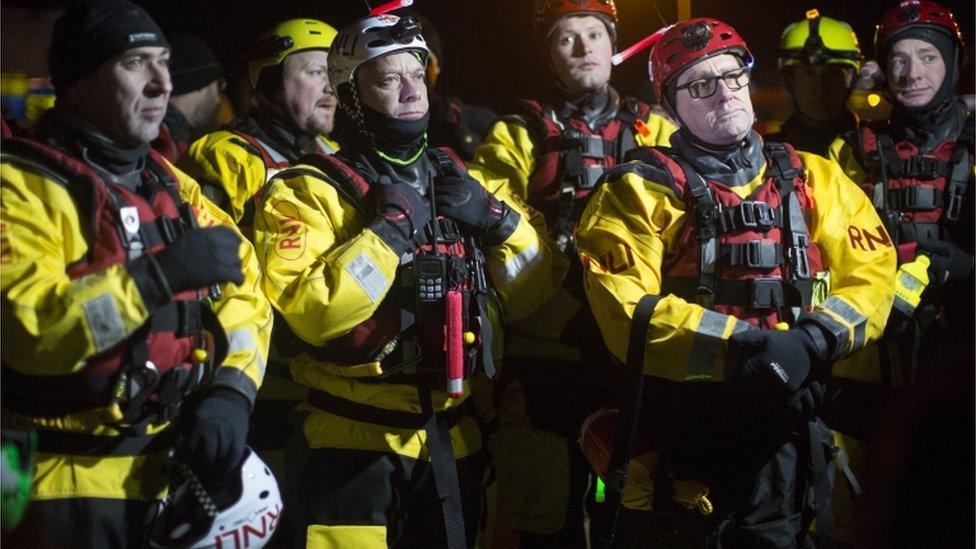
Rescue workers listened to a brief prior to the high tide in Jaywick
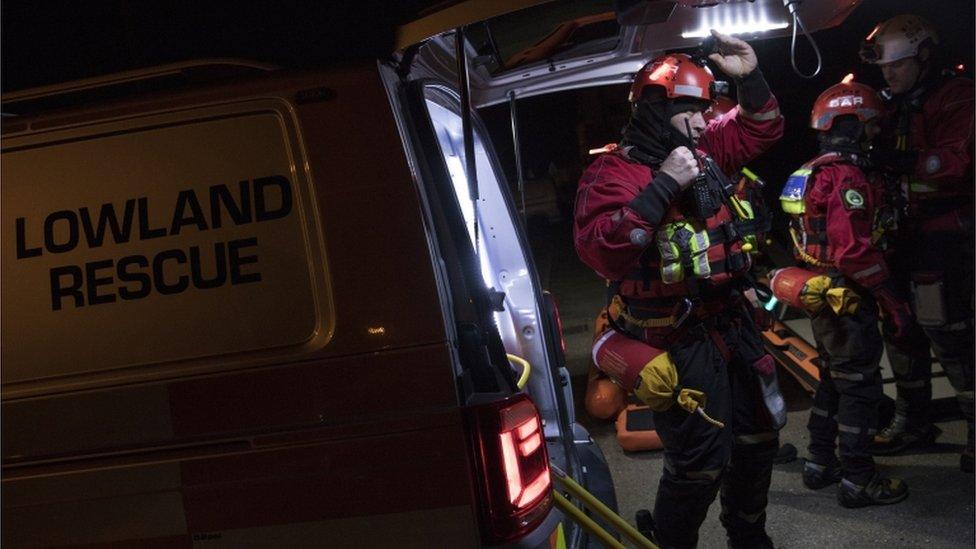
Many were on standby as villagers were evacuated
Charles Osborne, 52, said: "The river did get pretty high but I didn't think it would ever go over the walls. I guess it was a lot of panicking but you can't be too careful."
Jess Hudson, 19, from Gorleston-on-Sea, Norfolk, said: "I didn't think it would be as bad [floods in 2013] but people were worried and they'll be relieved the worst seems to have passed."
Great Yarmouth Council defended its evacuation plan and said it was not an overreaction.
Council leader Graham Plant said: "We're very grateful to all the people from all over the country who came here to help us.
"I don't believe we overreacted... If [the water] had breached, the residents would have been so grateful to have those people there to help them."
Norfolk Police thanked residents and volunteers for their support "in ensuring that the flood risks were minimised".
In Essex, police said the warnings were grounded in science and advice from the Environment Agency and the Met Office.
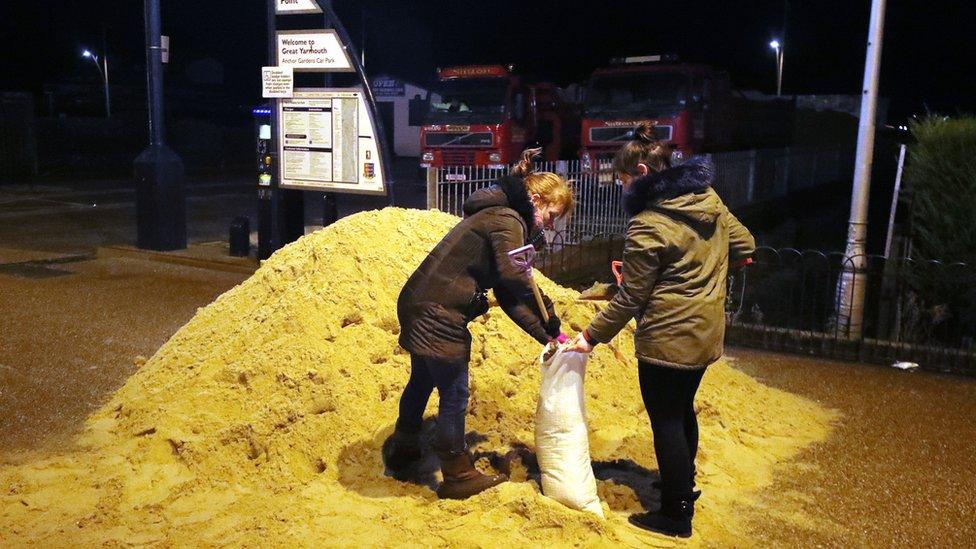
Residents in Great Yarmouth spent Friday evening filling sandbags in preparation for the predicted surge

Many were put to use protecting businesses along Great Yarmouth's sea front
"We prepare for the worst case scenario and we would be happy to take the same decision again should we be faced with the same advice as we have had over the last 36 hours," Deputy Chief Constable Matthew Horne said.
In a statement, the force added the Environment Agency had been unable to predict just how bad the situation might be as the likelihood of flooding was "so finely balanced".

At the scene - Richard Smith, BBC Essex
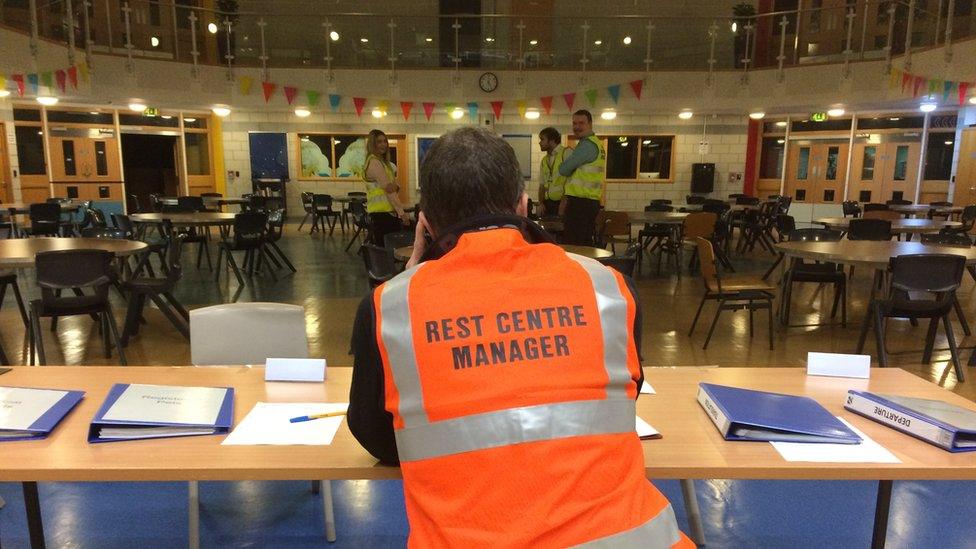
Only a few people remain at the rest centre in Jaywick this morning.
Last night 230 people bedded down - including an 18-day-old baby - but probably about 20 remain, most waiting for special transport.
There's very much an atmosphere of relief as the centre winds down.
There are blankets to fold and hospital beds to remove, but the centre has promised to stay open as long as it's needed.
And there's still lots of toast and jam, and coffee on offer.

About 200 army troops from the Wiltshire-based King's Royal Hussars and gunners from RAF Honington in Suffolk were drafted in to help evacuate homes in Great Yarmouth.
Norfolk Fire and Rescue Service said it attended a few incidents to "assist with flooding", including rescuing people stuck in flood water and assisting "with emergency lighting at an evacuation centre" in Walcott.

Those taking shelter at the Tendring Education Centre in Clacton were allowed to bring pets
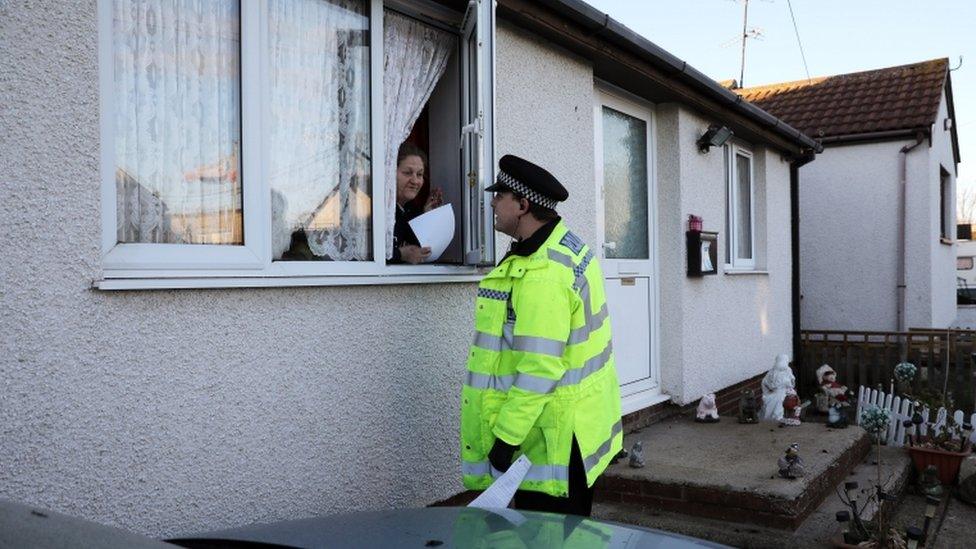
Police officers were advising residents in Jaywick to evacuate ahead of the storm surge
Further up the east coast similar flood warnings were in place.
A number of coastal roads were closed and the local council asked people to stay away from Whitby harbour while emergency services dealt with a number of incidents there.
North Yorkshire Fire Service dealt with flooding in nearby Sandsend on Friday and issued a warning asking people not to view the high tides.
Humberside Police said the high tide in Bridlington had passed "without serious incident" but said high waves had been reported along the coast.
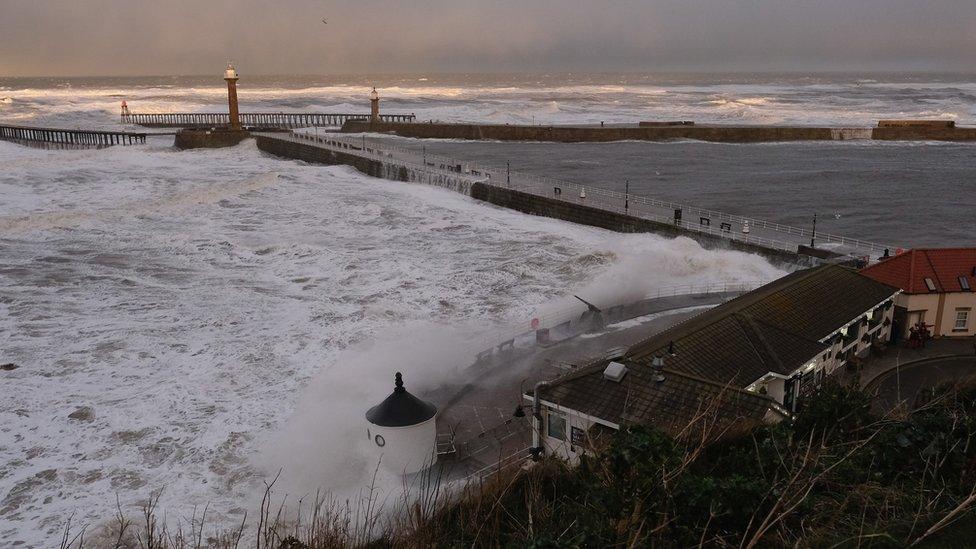
Waves broke over the sea wall in Whitby during Friday's tidal surge

Streets flooded around the seaside town's harbour
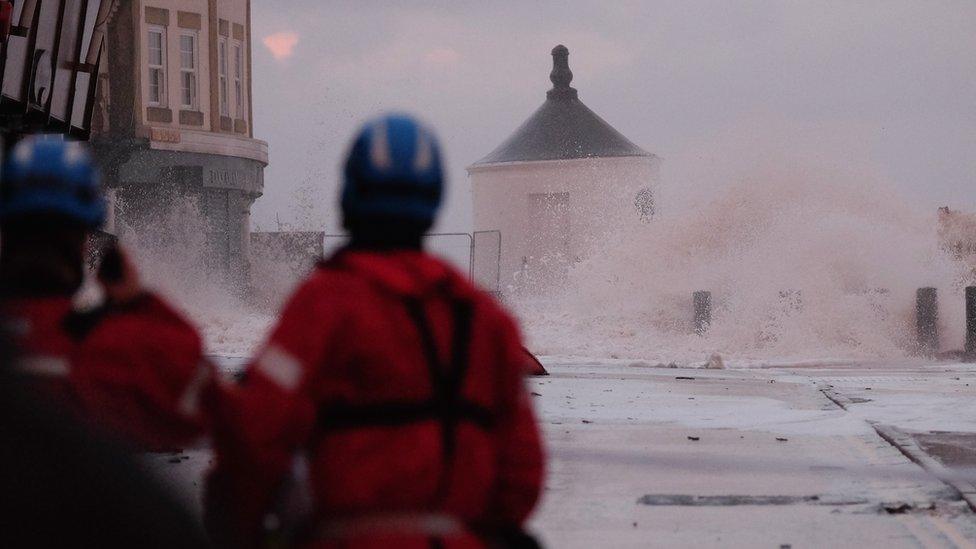
Members of the coastguard team looked on as waves crashed against the slipway
The BBC Weather Centre said Friday's winds are dying down and most places on the east coast should see some sunshine, although some sleet or snow flurries are likely in some areas.
The weather on Sunday is forecast to be similar, but more grey.
The Environment Agency's flood duty manager, Doug Wilson, said teams were out inspecting and repairing any damaged defences.
"We will continue to warn and inform the public of flood risks, as necessary," he added.
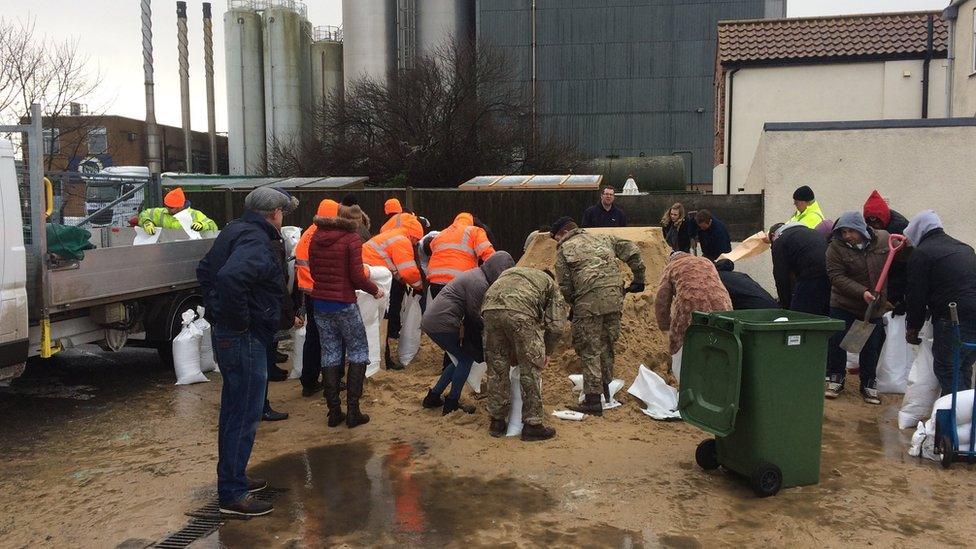
More than 250 tonnes of sand have been used to fill bags in Great Yarmouth
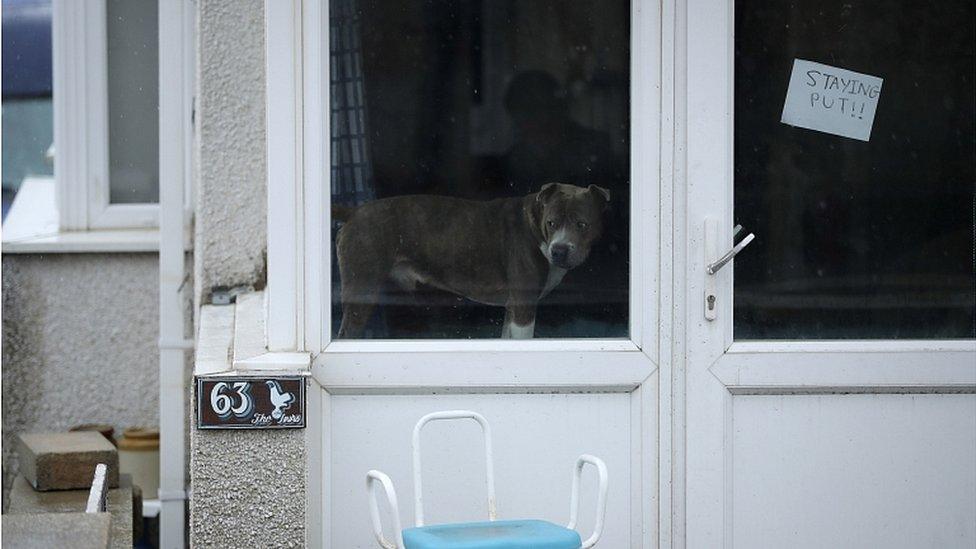
Not all residents wanted to leave their homes despite instructions from the police

What causes a storm surge?
The principal cause of a storm surge is high winds pushing the seawater towards the coast.
There is also a smaller contribution from the low pressure at the centre of the storm "pulling" the water level up - a similar effect to what happens when you drink through a straw.
The strong winds can generate large waves on top of the surge which can then damage sea defences or cause water to spill over the top of defences, which increases the flood risk to coastal communities.
Source: The Met Office

- Published12 January 2017
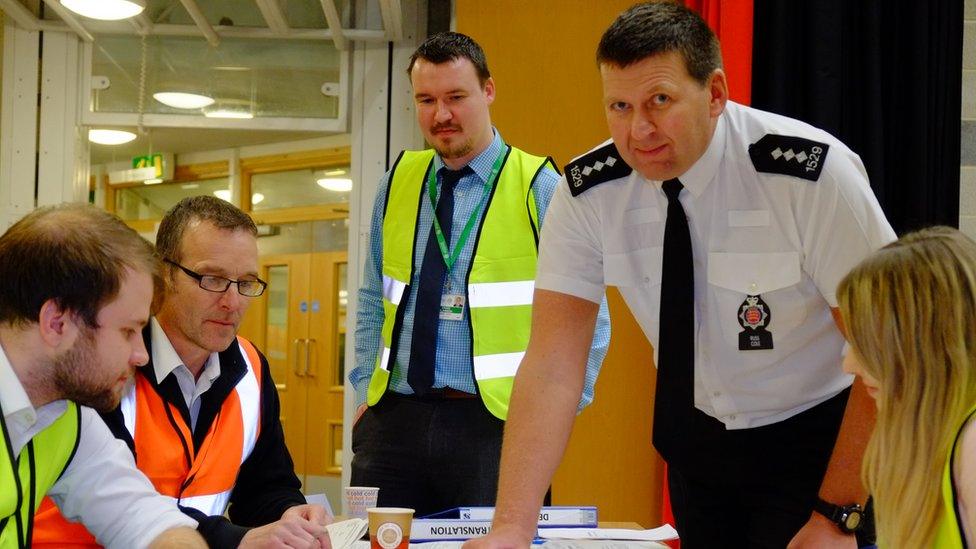
- Published13 January 2017
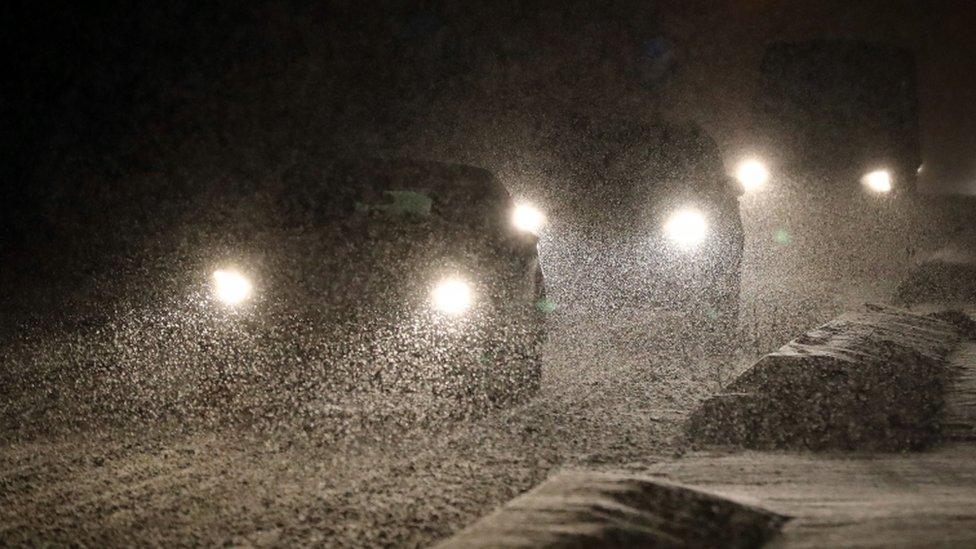
- Published16 June 2022

- Published6 December 2013
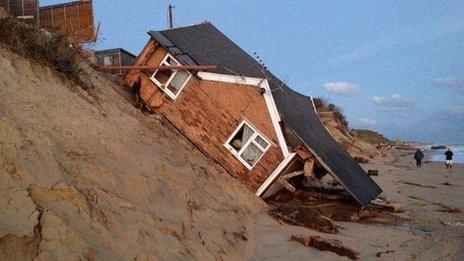
- Published6 December 2013
